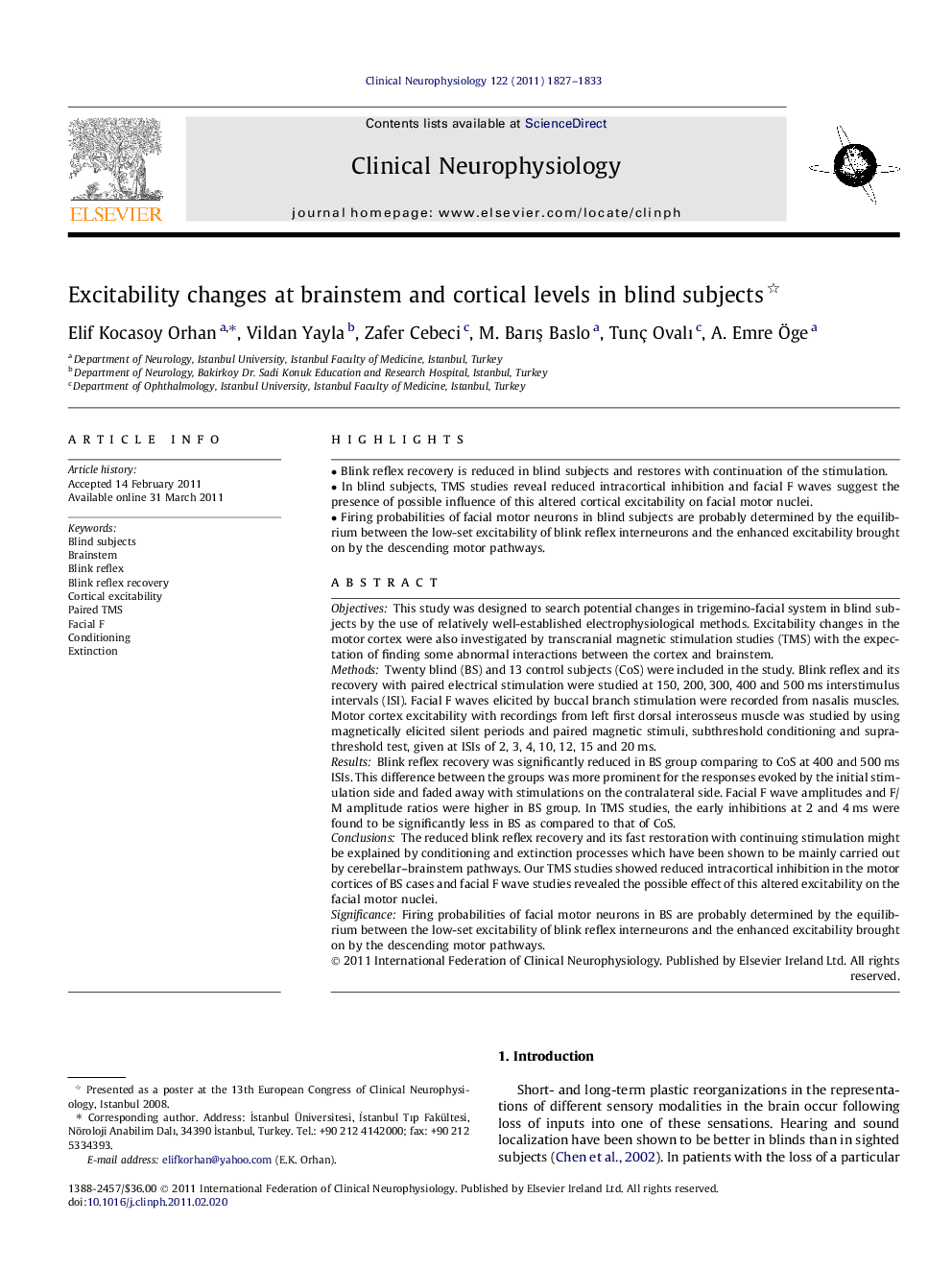| کد مقاله | کد نشریه | سال انتشار | مقاله انگلیسی | نسخه تمام متن |
|---|---|---|---|---|
| 3045792 | 1185030 | 2011 | 7 صفحه PDF | دانلود رایگان |

ObjectivesThis study was designed to search potential changes in trigemino-facial system in blind subjects by the use of relatively well-established electrophysiological methods. Excitability changes in the motor cortex were also investigated by transcranial magnetic stimulation studies (TMS) with the expectation of finding some abnormal interactions between the cortex and brainstem.MethodsTwenty blind (BS) and 13 control subjects (CoS) were included in the study. Blink reflex and its recovery with paired electrical stimulation were studied at 150, 200, 300, 400 and 500 ms interstimulus intervals (ISI). Facial F waves elicited by buccal branch stimulation were recorded from nasalis muscles. Motor cortex excitability with recordings from left first dorsal interosseus muscle was studied by using magnetically elicited silent periods and paired magnetic stimuli, subthreshold conditioning and suprathreshold test, given at ISIs of 2, 3, 4, 10, 12, 15 and 20 ms.ResultsBlink reflex recovery was significantly reduced in BS group comparing to CoS at 400 and 500 ms ISIs. This difference between the groups was more prominent for the responses evoked by the initial stimulation side and faded away with stimulations on the contralateral side. Facial F wave amplitudes and F/M amplitude ratios were higher in BS group. In TMS studies, the early inhibitions at 2 and 4 ms were found to be significantly less in BS as compared to that of CoS.ConclusionsThe reduced blink reflex recovery and its fast restoration with continuing stimulation might be explained by conditioning and extinction processes which have been shown to be mainly carried out by cerebellar–brainstem pathways. Our TMS studies showed reduced intracortical inhibition in the motor cortices of BS cases and facial F wave studies revealed the possible effect of this altered excitability on the facial motor nuclei.SignificanceFiring probabilities of facial motor neurons in BS are probably determined by the equilibrium between the low-set excitability of blink reflex interneurons and the enhanced excitability brought on by the descending motor pathways.
► Blink reflex recovery is reduced in blind subjects and restores with continuation of the stimulation.
► In blind subjects, TMS studies reveal reduced intracortical inhibition and facial F waves suggest the presence of possible influence of this altered cortical excitability on facial motor nuclei.
► Firing probabilities of facial motor neurons in blind subjects are probably determined by the equilibrium between the low-set excitability of blink reflex interneurons and the enhanced excitability brought on by the descending motor pathways.
Journal: Clinical Neurophysiology - Volume 122, Issue 9, September 2011, Pages 1827–1833